Published in August 2020 as part of a “Locomotive Profiles, Diesel & Electric” series, The Metropolitan-Vickers Type 2 Co-Bo Diesel-Electric Locomotives provides a detailed history of these spectacularly unsuccessful locomotives, more frequently known collectively as the “Co-Bos” due to their unusual wheel arrangement.
This hardback book from publishers Pen & Sword and written by Anthony P. Sayer is in landscape format and measures around 25.4 cm x 24.1 cm, has 272 pages, and 160 colour & black and white illustrations. It has a published price of £40, and at the time of writing, it can be obtained from Amazon for £27.44.
Twenty locomotives were constructed during the late-1950s, but from the start they were often out of traffic, most notably due to problems with their Crossley engines, resulting in extensive overhauls during the early-1960s.
The author has assembled a significant amount of archive and personal sighting information in 24 chapters to provide a detailed insight into this enigmatic class of locomotives. A description of the technical aspects of the engine and electrical equipment is followed by pages of correspondence that passed between various people involved in the design process until an agreement was reached on the final design.
Each class member is described in detail, with the history of each locomotive compiled from individual sightings and engine history cards providing about four pages of information for each locomotive, including several photos of each one and where they were scrapped.
The author has assembled an impressive amount of information about the class’s allocation history, including the dates and where each one was allocated, and their final withdrawal dates, as well as when and where each one was in works for overhaul or repair. Further chapters describe each locomotive’s liveries, detail differences between each one, and a brief summary of the routes and services where they were used.
A chapter on the class’s performance lists each loco’s mileage and availability during 1959-1961, including the revealing statement that “a number of passengers commented on their excessive noise and exhaust fumes, with the noise within stations having to be experienced to be believed and complaints from customers regarding fumes in passenger compartments”.
In 1960 the class was suffering so many faults that they were temporarily withdrawn from service before undergoing renovation work at the former Great Central’s carriage and wagon works at Dukinfield in Manchester. Four chapters are devoted to this period, with full details of when they were withdrawn, where they were stored, and how renovation affected their performance.
The illustrations below taken from the “Some Technical Aspects” chapter give a good idea of the amount of detail the author has included.
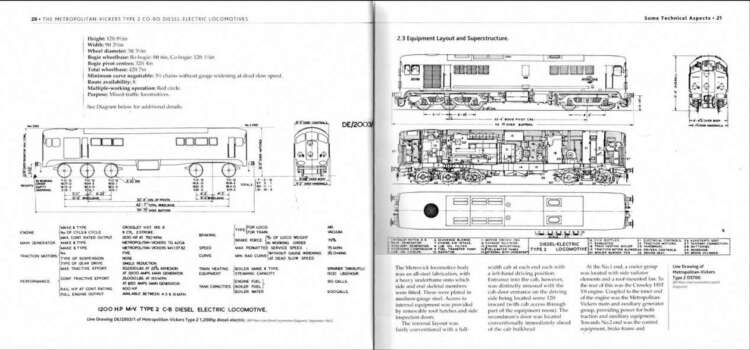
With their unbalanced Co-Bo wheel arrangement, the class was certainly unusual, as can be appreciated from the photos below.
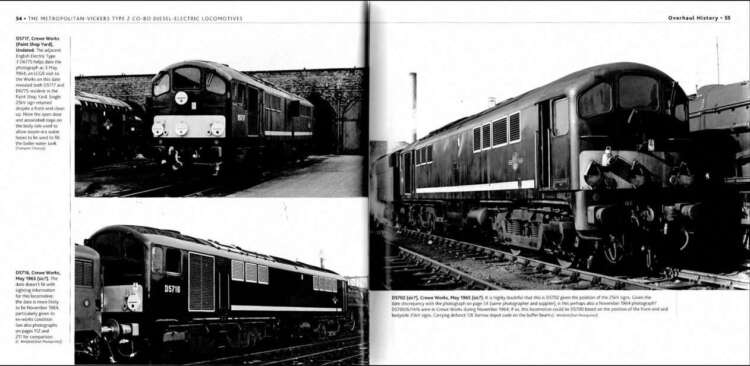
Although there were only 20 locomotives in the class, it seemed to suffer more than its fair share of derailments, such as those illustrated on the left-hand page below. Over half the class also caught fire at least once, as detailed on the right-hand page below.
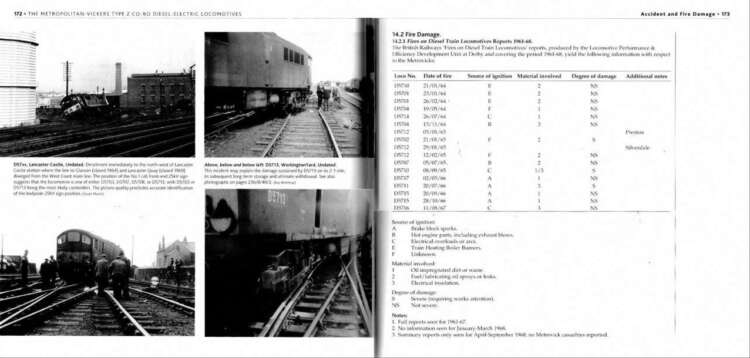
It would be unfair to give the impression that the class never featured in operational service, as they were used on both passenger trains, as at the top-left below, and on freight trains at the bottom right.
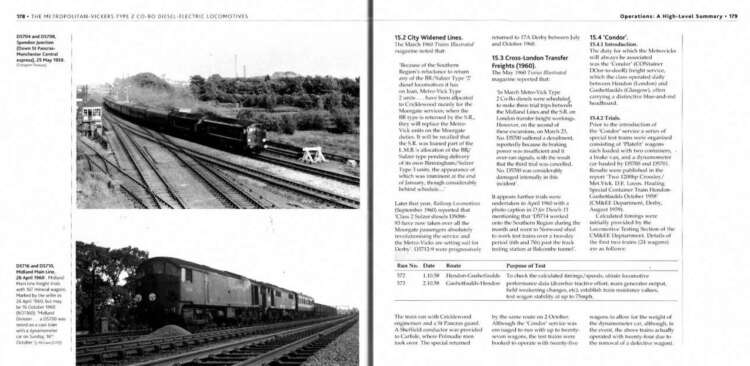
The amount of detail in the book even extends to such minor differences in the typeface used for the ‘D’ prefix to the locomotive’s number, with both variants seen in the photos below.
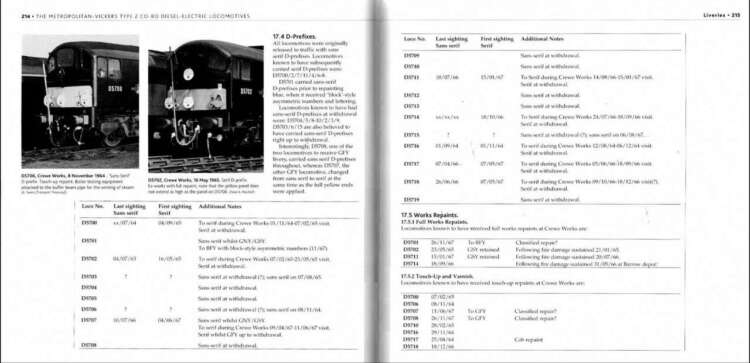
The book is available to purchase from Amazon and from Pen & Sword.
We would like to thank Pen & Sword for providing RailAdvent with a copy of the book for review.






Responses
As a teenage train spotter at Ulverston in the early 1960s, how we used to groan when a MetroVic appeared in the distance and not our beloved steam engines…